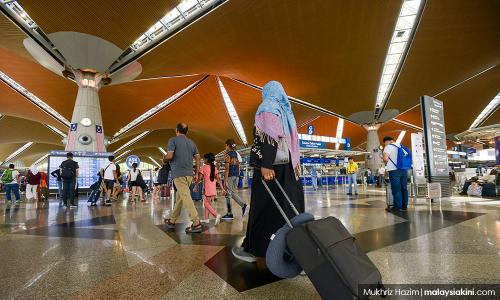KLIA: A full reboot is required to stay competitive
LETTER | With the recent resignation of Malaysia Airport Holdings Bhd’s (MAHB) chief executive, Raja Azmi Raja Nazuddin, PAS Central’s Economic, Real Estate and Entrepreneur Development Committee feels the time is right for the federal government to re-evaluate the aviation industry’s entire well-being and development.
As one of the key enablers for any nation’s economic growth, the industry’s ability to kickstart Malaysia’s own cannot be understated. Studies in Europe, for example, have shown how a 10 percent increase in a country’s air connectivity alone can increase its GDP by 0.5 percent.
An efficient and competitive airport structure is vital for Malaysia to remain competitive both within the region and around the world, and a look at Malaysia’s rivals today reveals a clear need for more than a revamp.
Hence, given the current need for new economic impetus and ideas, perhaps it is also timely for the government and MAHB to take amplify on the ongoing revamp and consider the expansion or outright construction of a new airport altogether.
Officially opened in 1998 with a capacity for 75 million passengers a year, KLIA today handles just 60 million passengers annually, with a growth rate of more than two percent per annum. The only new facilities created since its launch has been KLIA2, designed specifically to handle low-cost traffic, with no additions in the works for the main terminal.
By comparison, Singapore’s Changi International Airport which was opened in 1981, currently handles 65 million passengers annually. It has undergone five expansions since, including Terminal 2 in 1990, Terminal 3 in 2008 and Terminal 4 in 2017, and the launch of its newest attraction, the Jewel Changi Airport, a retail and entertainment complex that links three of its terminals with a range of current attractions. The development of Terminal 5, meanwhile, has been earmarked for the mid-2030s.
Bangkok’s Suvarnabhumi International Airport, built in 2006, now handles 63 million passengers every year and has been undergoing expansion since 2016 that is scheduled to be completed by 2021. Its next target is to increase its capacity to 125 passengers every year.
The same applies to Hong Kong’s famed Chek Lap Kok International Airport that was opened in 1998. It now handles 74 million passengers annually and has undergone two expansions since, the second due to be completed later this year.
KLIA’s competitiveness has clearly fallen down the ranks in the face of regional competition. Something needs to be done now to arrest the decline, and a complete revamp of the industry’s strategic direction and investment is long overdue.
The writer is PAS Central’s Economic, Real Estate and Entrepreneur Development Committee vice-chairperson.
The views expressed here are those of the author/contributor and do not necessarily represent the views of Malaysiakini.
RM12.50 / month
- Unlimited access to award-winning journalism
- Comment and share your opinions on all our articles
- Gift interesting stories to your friends
- Tax deductable
